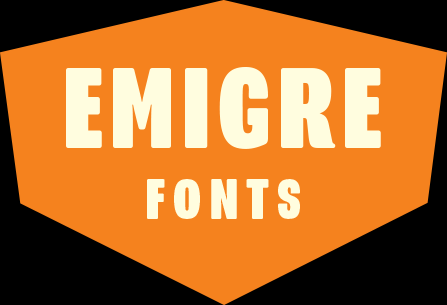13 Big Western Landscapes
By Rudy VanderLans
This essay was first published in 2006 in the accompanying catalog to the exhibition 13 Big Western Landscapes at Gallery 16, San Francisco.
All art finds its common quality in the halftone dots that reproduce it. That’s the one sentence I was able to cobble together that said something meaningful about the subject of these photographs. But isn’t the subject of these photographs the western landscape? you ask. Perhaps you’re right. But I’m not sure. Anyway, I felt the urge to write a clever essay to distract from the fact that blown up halftone dots are a visual cliché except, of course, in the hands of Roy Lichtenstein and John Baldessari but that’s a different story.
What exactly are halftone dots? It’s a complicated technical issue, but let’s just say that without the halftone dot it would be difficult to reproduce images in books and magazines. So they play an important role, particularly in art. Actually, most people get their first glimpse of art in printed form in art books, encyclopedias, catalogs, and magazines. This means that they usually see a given piece of art first through the medium of the halftone dot, which in the case of Roy Lichtenstein’s work should make you wonder where the original art ends and the reproduction starts. But again, I stray.
So why use blown up halftone dots when they carry such baggage? Well, it’s a curious story that started when my friend Paul, who is a well respected San Francisco photo dealer, looked at one of my photo books, Pages From an Imaginary Book, and said: I like these photos but the reproductions really suck, or words to that effect. This struck me as an interesting remark because it seemed that Paul was assuming he was looking at reproductions of traditionally produced landscape photos. Such photos and their reproductions have a certain standard to live up to, especially in the mind of photo dealers such as Paul, and mine fell short by about a mile.
Paul’s initial reaction to my book of photos was no big surprise. In the world of art it is common practice to first produce originals, and then, when desired, reproduce the work in catalogs, books, invitations, and other printed materials. Whenever a work of art is reproduced, the goal is to match the reproduction to the original as closely as possible. This is never easy; sometimes it’s impossible, and it always requires the expertise of skilled laborers such as graphic designers, color separators, scanners, and printers. And in the end, the reproduction is almost always inferior to the original because the techniques and materials used to create the originals are usually different from the halftone dots used in the reproductions.
What Paul was looking at in my book, however, were not reproductions of originals. And the reason they didn’t look like the costly reproductions that photo dealers usually drool over is because the book was designed to meet very specific production parameters: cheap uncoated paper, coarse halftone dots, a single color, etc.
See, I was after a particular effect. Let’s call it cheap, third-world printing, an effect usually avoided in fine art photography books, particularly the ones dealing with landscape photography. I wanted to make a comment about the near impossibility of perfect reproductions and at the same time make a book that had a unique quality all its own. The photos were processed not to match an original, but to fit the context and concept of the book. They were scanned, cropped, and printed to look the way they do on purpose. In that sense the photos in the book are the originals.
Paul’s honest response to the book gave me an idea, though. I could turn the relationship of original and reproduction upside down by making large fine art prints based on the images in the book, like a Bizarro World art publishing project. By keeping the halftone dots intact, and simply enlarging them from the book, I could arrive at a closer approximation between original and reproduction. I wasn’t sure what the deeper meaning of this exercise was, but in the process I would raise all sorts of questions about representation, expectation, mediation, original, reproduction, and let’s not forget visual clichés. Raising questions is often all you need to do in art, so I figured I was on the right track.
That’s how I arrived at these prints. Somewhere during the process I put together that sentence, All art finds its common quality in the halftone dots that reproduce it, which sounded just terrific. It seemed like I was getting at the essence of something. Perhaps even a perfect justification for using a visual cliché. Then I was reminded of your question at the beginning of the essay about the subject of these photographs, and realized that if you can enjoy these images for what they are, big western landscapes, that’s fine too.


